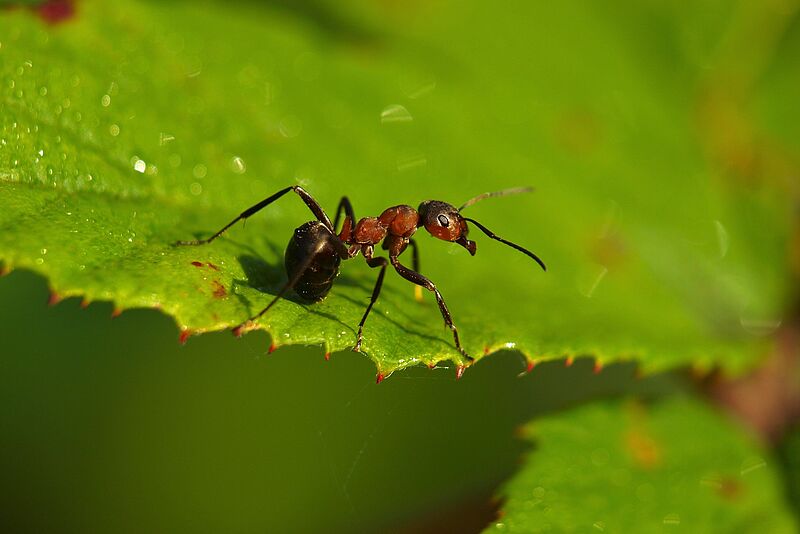
The crucial role of ant control in your IPM strategy
The impact of ants on fruit orchards can be significant, making ant control an essential component of an Integrated Pest Management (IPM) strategy. Ants, while not always directly harmful to fruit trees, play a complex role in orchard pest dynamics. Their control is crucial for several reasons:
- Facilitators of other pests:
- Honeydew production: Ants have a mutualistic relationship with sap-sucking insects such as aphids, scales, and mealybugs. These pests excrete honeydew, a sugary substance that ants feed on. In exchange, ants protect these pests from predators and parasitoids, which can lead to severe pest infestations in the orchard.
- Pest spread: Ants can move pests from one tree to another, exacerbating pest problems and complicating pest management efforts.
- Disruption of beneficial insects:
- Predator protection: By defending the pests they farm, ants can hinder the effectiveness of natural predators and parasitoids that would otherwise help control pest populations. This interference can lead to increased pest numbers and greater damage to fruit trees.
- Economic consequences
- Reduced fruit quality and yield: The combined effect of ants and the pests they harbour can lead to diminished fruit quality and lower yields. This impacts both the profitability and the overall health of the orchard.
Methods of ant control within an IPM strategy
- Cultural controls
- Sanitation: Maintaining cleanliness around the orchard is crucial. Fallen fruit, leaf litter, and other organic matter can attract ants and pests. Regularly removing this debris helps to reduce ant and pest populations.
- Physical barriers: Install barriers, such as sticky bands or grease rings, around tree trunks. These prevent ants from climbing and accessing the fruit, reducing their ability to protect pests on the trees.
- Biological controls
- Encourage natural predators: Create an environment that supports the presence of natural enemies, like ladybugs and lacewings, which help control pest populations. By fostering these beneficial insects, growers can enhance natural pest control.
- Ant pathogen applications: In some cases, introducing natural ant pathogens, such as specific fungi (e.g., Beauveria bassiana), can help control ant colonies. These pathogens can infect and reduce ant populations over time.
- Chemical controls
- Baits: Ant baits are a popular and effective method for controlling ants. These baits contain slow-acting insecticides that ants carry back to their colonies, eventually killing the entire nest. This method targets the root of the problem and can be very effective if placed correctly.
- Insecticides: Direct applications of insecticides should be used judiciously to avoid harming beneficial insects. When necessary, target specific ant trails or nest sites for treatment.
- Integrated approaches
- Monitoring and thresholds: Regularly monitor ant populations and their impact on pest levels. Establish action thresholds to determine when and where control measures should be implemented. This helps in making informed decisions and prevents unnecessary treatments.
- Combination strategies: Using a combination of cultural, biological, and chemical methods often yields the best results. For example, combining ant baits with physical barriers can enhance overall effectiveness and minimize reliance on chemical controls.
- Environmental management
- Habitat modification: Adjusting orchard practices, such as managing vegetation and irrigation, can make the environment less favourable for ant nesting and pest proliferation.
Effective ant control is a vital part of managing a successful fruit orchard. By understanding the role ants play in pest dynamics and employing a range of control methods within an IPM strategy, growers can mitigate the impact of ants and enhance the health and productivity of their orchards. Through careful monitoring and a combination of cultural, biological, and chemical controls, it is possible to achieve a balanced and thriving orchard ecosystem that supports both fruit quality and economic viability.